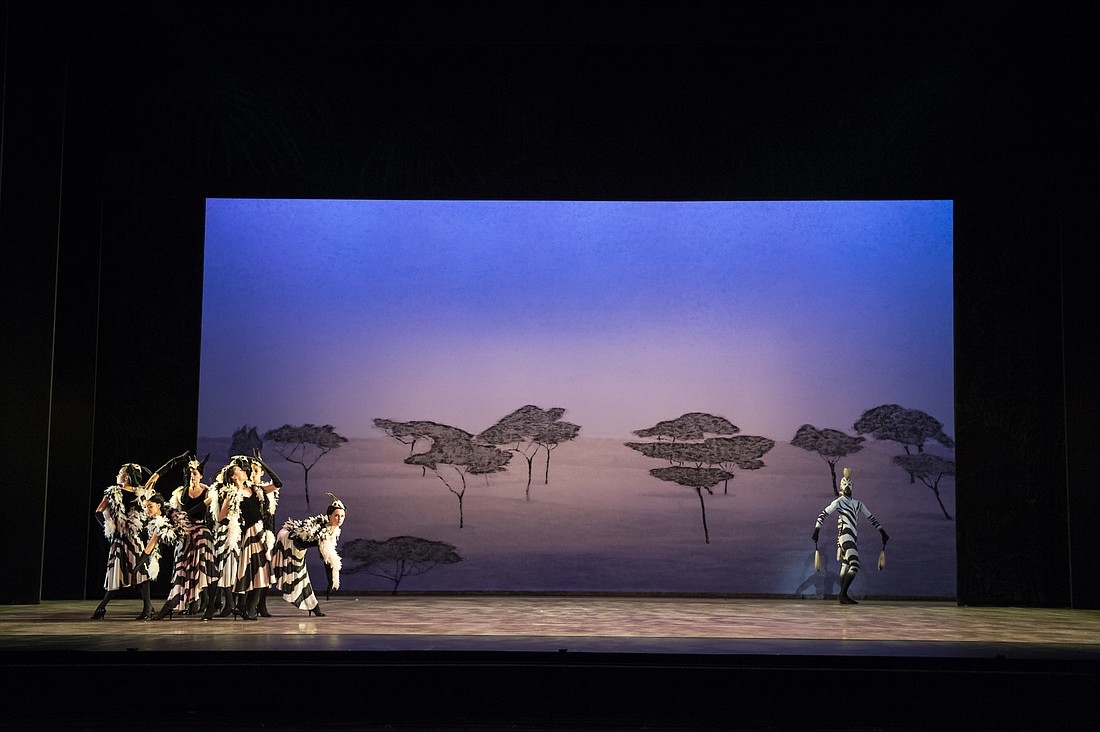- November 23, 2024
-
-
Loading

Loading

Nature is a common artistic theme, but in this opener to The Sarasota Ballet spring season, it is portrayed in two distinct ways — as an important backdrop for one piece and the center focus of the other.
“Dreams of Nature” features two ballets: Sir Frederick Ashton’s “The Dream” and Birmingham Royal Ballet Director David Bintley’s “‘Still Life’ at the Penguin Café.” Ashton’s piece is a depiction of Shakespeare’s “A Midsummer’s Night’s Dream,” which was created for a Royal Ballet celebration commemorating the quarter centenary of the playwright’s birth. Bintley’s work follows the story of a diverse group of endangered animals seeking shelter from a storm at the Penguin Café. We sat down with Bintley while he was in town to get a better sense of what this piece means to him and why he created it.
It’s slightly whimsical, it’s slightly surreal, it’s slightly comical and it’s entertaining — and it’s about extinction, and what’s entertaining, what’s whimsical and what’s comical about extinction? Nothing. So it plays with those two ideas. I’m trying to say something really important about the planet but I’m trying to do it in a really entertaining way. I want people to realize that when something’s gone it’s gone, no matter how beautiful or entertaining it is.
The ultimate idea of the piece is we see animals from different parts of the globe and they have dance styles that correspond to those different geographic locations.
I’ve never done anything before or since quite like it. And it is a difficult one. What’s tricky is there are so many nuances and stylistic inputs into the choreography. It’s quite eclectic, deliberately so, because I’m trying to reflect a) an animal; b) a location; and c) a dance style, and that’s hard. You can teach this ballet and people can do it and you can get 80-90% of it right, but if you want to get the real nuance of every style so every piece looks kind of different, then every little detail makes such a difference. It’s the hardest piece to teach because every time I want to get that real quality.
Ballet dancers are so used to being off the floor and having stretched feet and in African dance, they don’t care about the feet. The feet aren’t flexed, they’re not stretched, they’re just the extremity, and it’s usually in the arms or the torso or something. So I have to say forget the feet, this is the point of the step. So you have to teach the style of the piece and you also have to get rid of everything else they know.
Probably not. The dancers that will have an advantage are the ones that understand you have to get rid of classical (sensibilities) and look at what’s there. The best dancers are the dancers that have a real sense of natural movement. You can get a wonderful technician that can do “Swan Lake” wonderfully but can they be a Southern Cape zebra?
When the Penguin Café Orchestra came out — that’s the music that I use — they were one of the first ensembles that were genuinely inspired by world music. And to founder Simon Jeffes, that’s what the Penguin Café was, this imaginary, surreal place where you have these fragments of the world. I tried to visualize that.
It’s a kind of show within a show up until a point. It’s as if we’re part of the audience at the Penguin Café until the end when suddenly you realize nothing is what it seemed and the animals are people dressed as animals. So there’s a great deal of surrealness in the piece.
It’s one of those dangerous things because it’s the 30th anniversary, and every time you bring things back you think this time it won’t work. I think it’s a piece that plays with two ideas. On the one hand, it’s intentionally entertaining and whimsical and a surprising piece so it’s meant to make people feel good, to enjoy it, but also to go, “Ah, that’s the point.”
It’s always interesting working with a company you’re not familiar with and setting a piece that you’re wholly familiar with on a new group of people. You look at the piece differently, and you get to know the dancers. Iain (Webb) and I came from the same place, we were dancers in the same company, so I think we have the same view of things because we have very much the same experience.